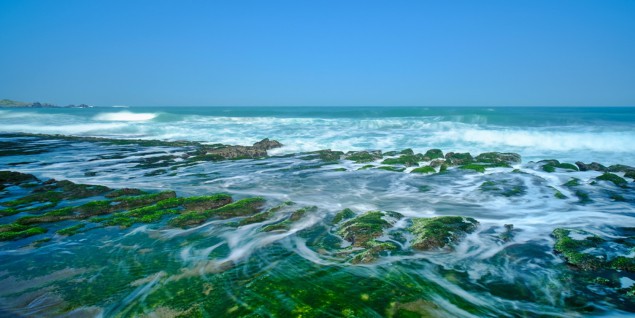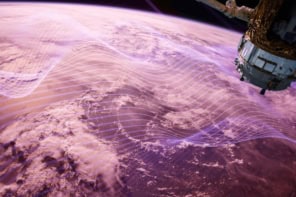
Each of the five mass extinctions over the last 500 million years that saw at least 75% of species disappear was accompanied by a surge in carbon entering the ocean. But carbon pulses are relatively common and usually benign; there were around 30 over that same time period. So what sets mass extinction events apart?
A study suggests that Earth’s oceans have a distinct threshold when it comes to the amount of carbon they can process. Mass extinction events occur when the threshold is passed. Anthropogenic carbon dioxide emissions are comparable to the carbon surges associated with previous mass extinction events, suggesting that we’re likely to be triggering a sixth mass extinction event right now.
Carbon is constantly cycled around our planet. Photosynthesis converts carbon dioxide to organic carbon; respiration converts organic carbon back to carbon dioxide. Sometimes carbon ends up in a long-term store, for example when small ocean creatures such as coccolithophores sink to the sea-floor and lock the carbon into sediments, but eventually the carbon returns to the loop as, in this case, geological processes uplift the rocks and weathering releases the carbon to the atmosphere.
Many external triggers can disrupt the carbon cycle including variations in orbital motions, release of methane hydrates, meteorite strikes, evolutionary changes and volcanic emissions. Ocean sediments record those disruptions, with carbon-rich rocks forming when atmospheric carbon dioxide levels are high. Until now, the consensus has been that the ocean responds proportionately to the amount of carbon being pumped into it: the larger the trigger, the more carbon-rich the ocean sediments become.
However, Daniel Rothman from Massachusetts Institute of Technology, US, was puzzled by the fact that, regardless of their size, most carbon pulses result in a characteristic rate of change in the ocean’s store of carbon but mass extinction events appear to have a far greater rate of change. To understand this anomaly, Rothman modelled the marine carbon cycle mathematically, exploring how disruptions to the incoming carbon flux were likely to influence the way that carbon was stored.
The model demonstrated that up to a certain limit, Earth’s oceans can absorb and process pulses of carbon dioxide and return to their steady state. But above a certain threshold, the oceans were pushed out of their steady state, resulting in acidification at the surface.
“I’m suggesting that the magnitude of the disruption is determined not by the strength of the external stressors but rather by the carbon cycle’s intrinsic dynamics,” says Rothman, whose findings are published in the Proceedings of the National Academy of Sciences (PNAS). His results suggest that this ocean threshold is yet another “tipping point”, beyond which there’s a nonlinear response.
By looking at the size and duration of the 31 disruptions to the global carbon cycle over the last 542 million years, Rothman showed that the majority have a characteristic rate of change, but that four of the five mass extinction events grew faster than this.
The model suggests that the ocean threshold also depends on the duration over which the carbon flux is increased. Relatively weak but long-lived perturbations, such as massive volcanic eruptions occurring over millions of years, can overshoot the threshold. But short sharp disruptions, like the intense pulse of carbon dioxide produced by current anthropogenic emissions, can pass the threshold too.
Rothman shows that today’s anthropogenic emissions and the carbon dioxide associated with massive volcanism in the past are roughly equivalent in their potential to pass the ocean threshold. This suggests that mankind’s actions may well trigger a mass extinction event. But because the oceans take a while to respond, it will be some time before the sixth mass extinction event becomes visible in the rock record.
“If the carbon cycle passes the threshold, the effects would play out over a period of ten thousand years or more,” says Rothman.



